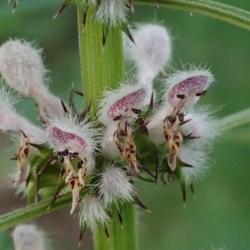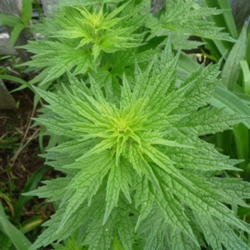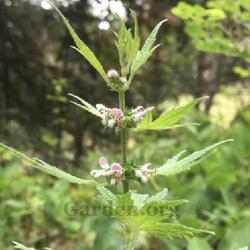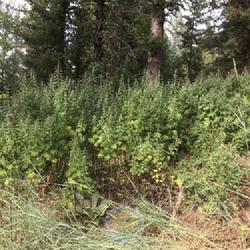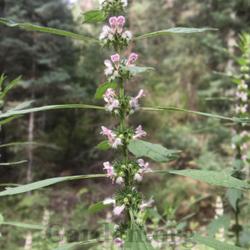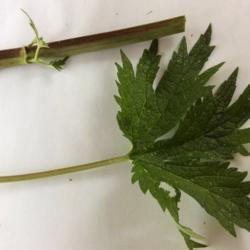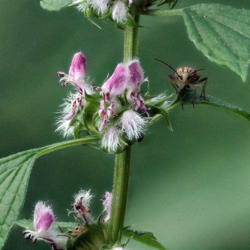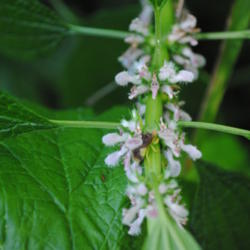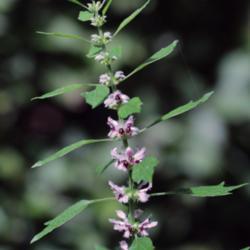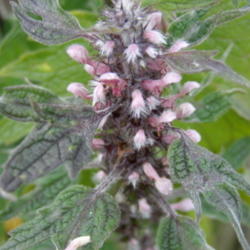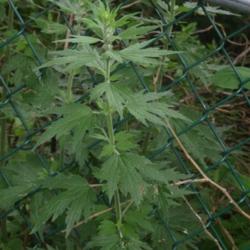| Plant Habit: | Herb/Forb |
| Life cycle: | Perennial |
| Sun Requirements: | Partial or Dappled Shade |
| Water Preferences: | Mesic |
| Minimum cold hardiness: | Zone 4a -34.4 °C (-30 °F) to -31.7 °C (-25 °F) |
| Maximum recommended zone: | Zone 8b |
| Plant Height: | 2 to 5 feet (.6-1.5m) |
| Plant Spread: | 1 to 2 feet (30-61cm) |
| Leaves: | Fragrant Other: lobed |
| Flowers: | Inconspicuous |
| Flower Color: | Mauve |
| Bloom Size: | Under 1" |
| Flower Time: | Summer Late summer or early fall |
| Underground structures: | Rhizome |
| Uses: | Medicinal Herb Will Naturalize Suitable as Annual |
| Wildlife Attractant: | Bees |
| Resistances: | Deer Resistant Rabbit Resistant |
| Propagation: Seeds: | Provide light Suitable for wintersowing Sow in situ Can handle transplanting |
| Pollinators: | Bees |
| Miscellaneous: | Tolerates poor soil |
